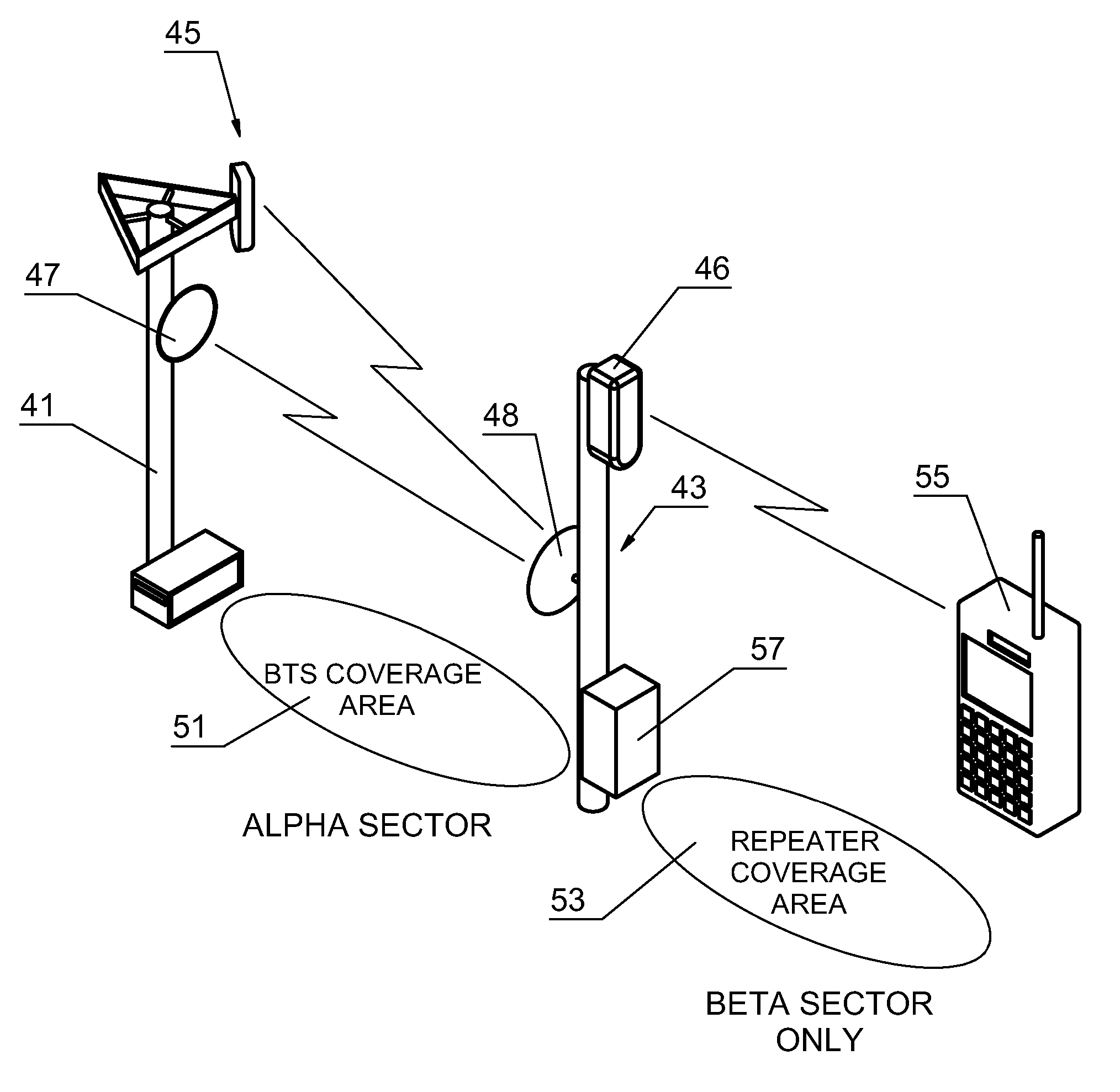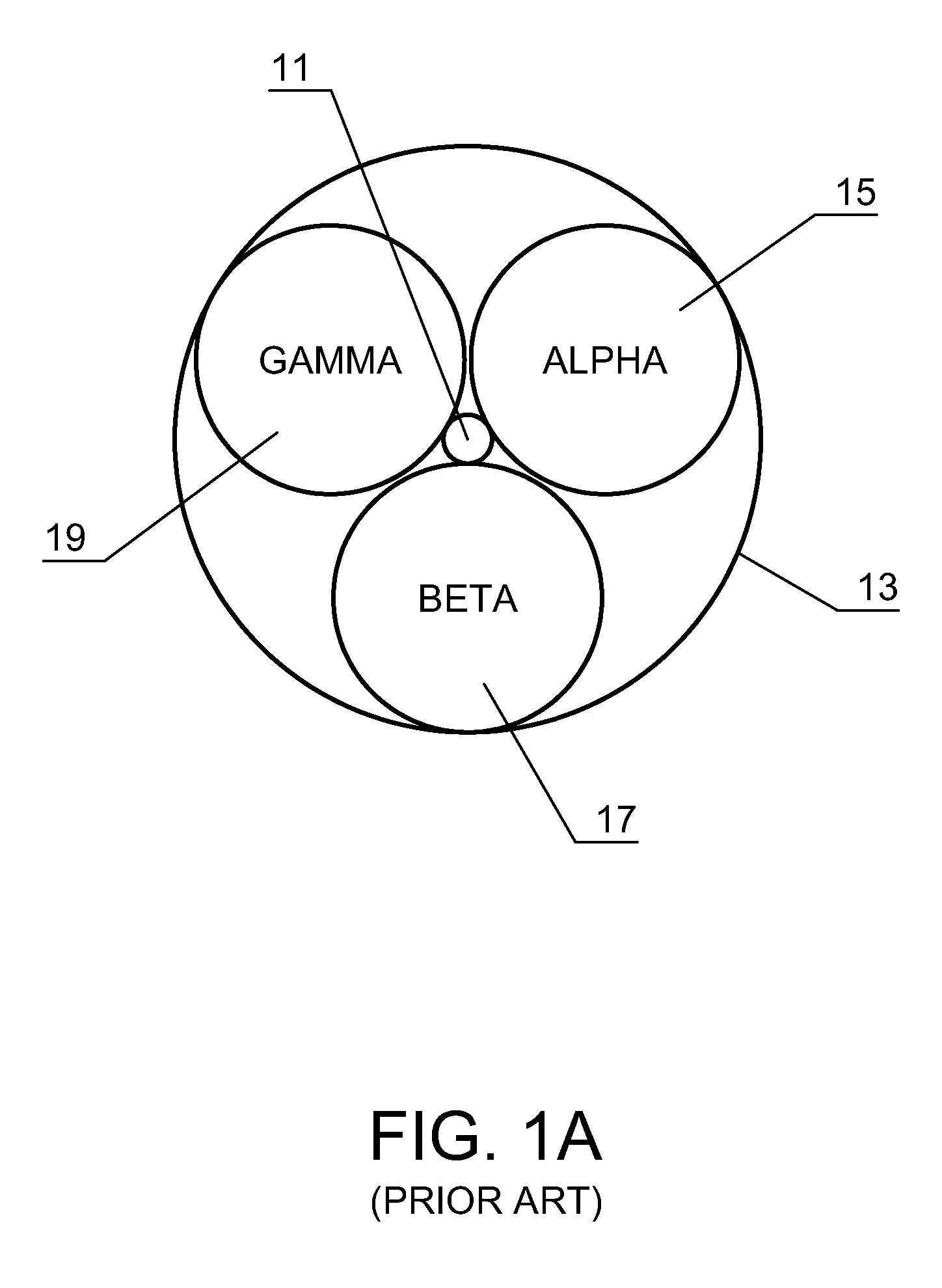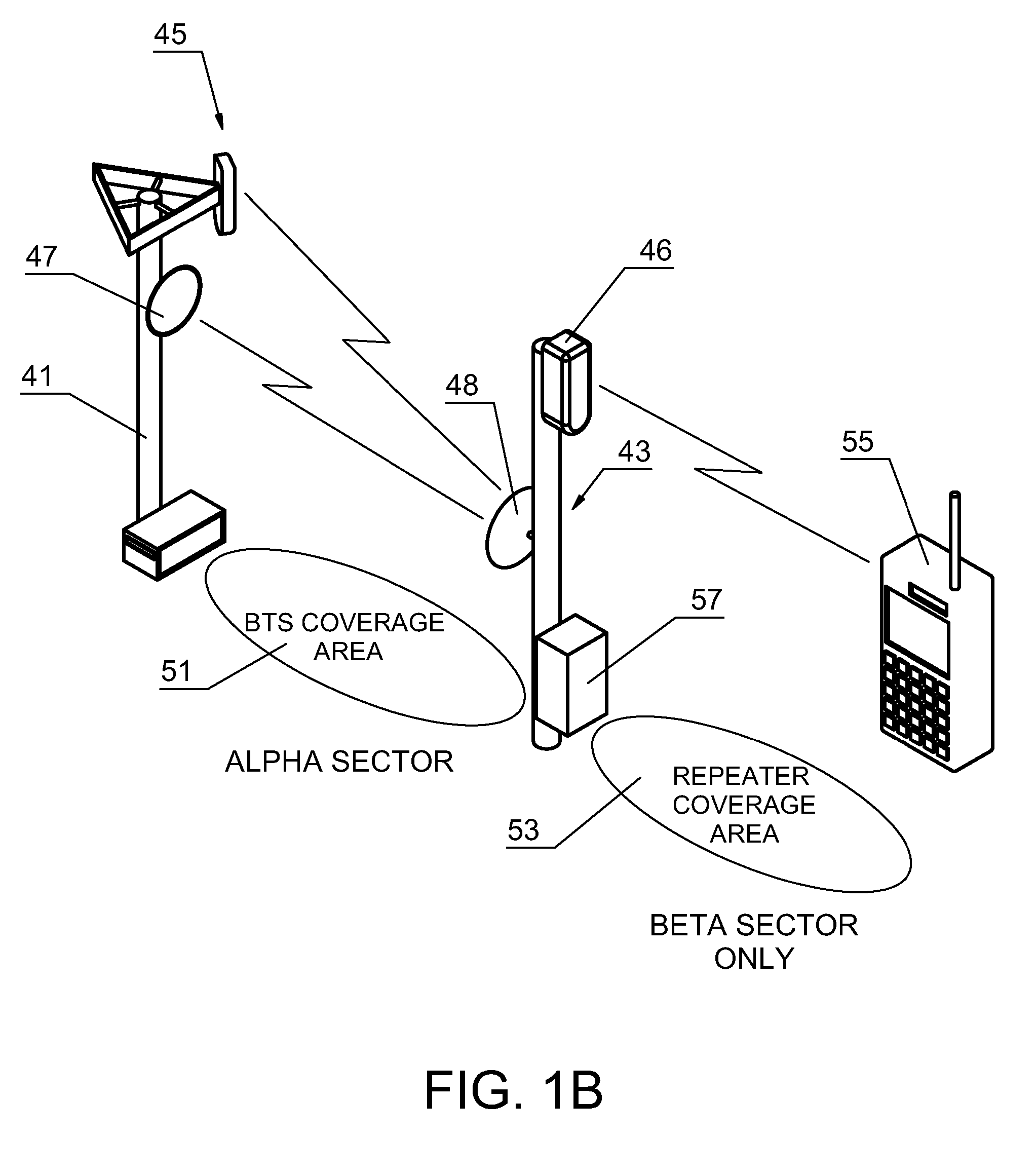Method and apparatus for utilizing selective signal polarization and interference cancellation for wireless communication
a wireless communication and signal polarization technology, applied in the field of wireless communication systems, can solve the problems of limiting the use of repeaters, high equipment cost, site acquisition cost, software licensing fee, etc., and achieve the effect of expanding the communication range and/or system capacity
- Summary
- Abstract
- Description
- Claims
- Application Information
AI Technical Summary
Benefits of technology
Problems solved by technology
Method used
Image
Examples
Embodiment Construction
[0024]FIG. 1 A is a simplified pictorial representation of the transmission of wireless communications from a tower 11. The tower 11 has a range of coverage 13 which extends outward from tower 11. In most wireless communications, such as cellular and PCS telecommunications, the signals being transmitted and received by tower 11 are vertically polarized elements of electromagnetic waves. The coverage 13 of tower 11 is customarily segmented into three sectors each of which spans 120 degrees. The sectors are identified as an alpha sector 15, a beta sector 17, and a gamma sector 19. In most conventional wireless communication systems, horizontally polarized elements of electromagnetic fields are not typically or commonly utilized to transmit communications. The preferred embodiment of the present invention utilizes combinations of transmissions which are made utilizing vertically polarized elements of electromagnetic waves and transmissions utilizing horizontally polarized elements of e...
PUM
 Login to View More
Login to View More Abstract
Description
Claims
Application Information
 Login to View More
Login to View More - R&D
- Intellectual Property
- Life Sciences
- Materials
- Tech Scout
- Unparalleled Data Quality
- Higher Quality Content
- 60% Fewer Hallucinations
Browse by: Latest US Patents, China's latest patents, Technical Efficacy Thesaurus, Application Domain, Technology Topic, Popular Technical Reports.
© 2025 PatSnap. All rights reserved.Legal|Privacy policy|Modern Slavery Act Transparency Statement|Sitemap|About US| Contact US: help@patsnap.com



